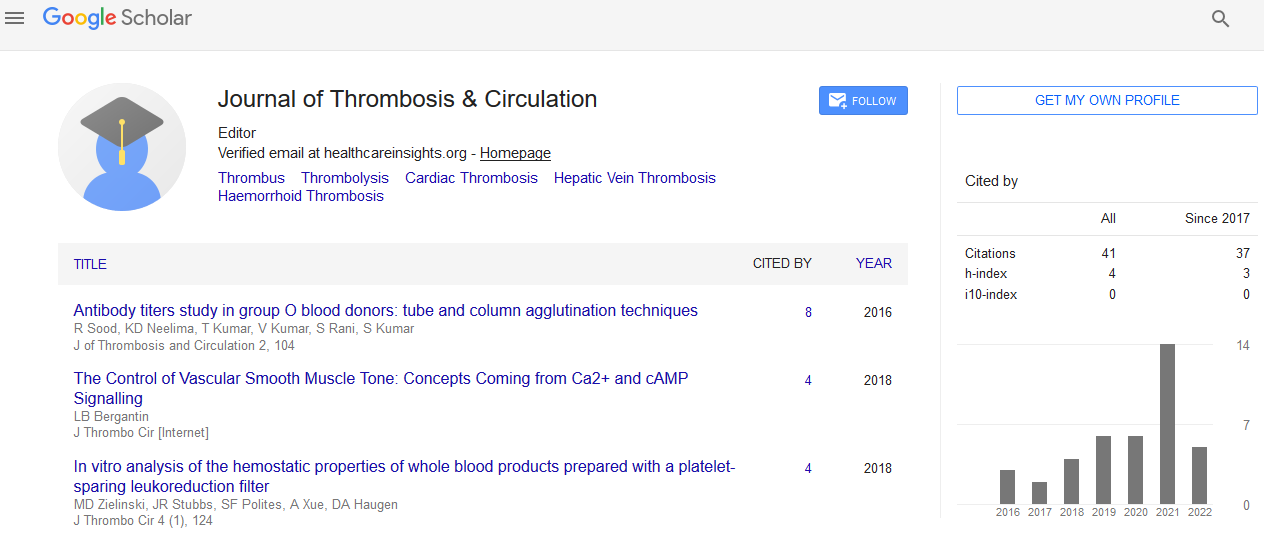Indexed In
- RefSeek
- Hamdard University
- EBSCO A-Z
- Publons
- Google Scholar
Useful Links
Share This Page
Journal Flyer

Open Access Journals
- Agri and Aquaculture
- Biochemistry
- Bioinformatics & Systems Biology
- Business & Management
- Chemistry
- Clinical Sciences
- Engineering
- Food & Nutrition
- General Science
- Genetics & Molecular Biology
- Immunology & Microbiology
- Medical Sciences
- Neuroscience & Psychology
- Nursing & Health Care
- Pharmaceutical Sciences
Abstract
In vitro Analysis of the Hemostatic Properties of Whole Blood Products Prepared with a Platelet-Sparing Leukoreduction Filter
Zielinski MD, Stubbs JR, Polites SF, Xue A, Haugen DAL, Emery R, Jenkins DH and Park MS
Background: Warm fresh whole blood (WFWB) is an ideal resuscitation fluid for exsanguinating patients but there are myriad logistic and infectious issues associated with its use. Cold whole blood (CWB) may be an acceptable alternative to the reconstituted whole blood (RWB), the current standard of care. A leukoreduction filter has been developed which maintains platelet count while eliminating white blood cells but its effect on platelet function is unknown. We hypothesize that CWB will retain an acceptable functional coagulation profile after filtration and over time. Study Design and Methods: WFWB and CWB samples were obtained from eight donors and four units of RWB were created. The quantitative and qualitative in vitro coagulation profiles of WFWB, RWB, and CWB over time were compared.
Results: Filtration was successful at removing white blood cells (5.5 ± 1.2 vs. 0.3 ± 0.3 × 106/L) while retaining an adequate platelet count (172.0 ± 47.0 to 166.0 ± 42.3 × 109 /L) and hemoglobin concentration (13.7 ± 0.5 vs. 13.0 ± 0.7 g/dL). Rotational Thromboelastography (ROTEM) results revealed a similar clotting time (CT) before and after filtration (64.9 ± 5.1 vs. 64.1 ± 6.8 s) but a decreased maximum clot firmness (MCF) (58.6 ± 4.2 vs. 54.9 ± 4.6 mm). Platelet aggregation decreased substantially (28.8 ± 6.7 vs. 9.3 ± 2.1 ohm) immediately after filtration. CWB function continued to diminish over time.
Conclusion: CWB holds great promise as a surrogate for WFWB, but use of a platelet-sparing LR filter diminishes platelet function almost immediately after filtration.

